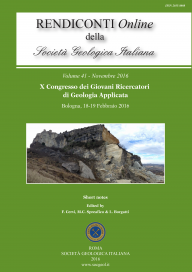
Nonlinear regression technique to assess the landslide susceptibility of the Kalapahar hill, Guwahati, Assam State (India).
Maria Giuseppina Persichillo (a), Parag Jyoti Dutta (b), Massimiliano Bordoni (a), Claudia Meisina (a), Carlotta Bartelletti (c), Michele Barsanti (d), Roberto Giannecchini (c), Giacomo D'Amato Avanzi (c), Yuri Galanti (c) & Andrea Cevasco(e)
(a) Department of Earth and Environmental Sciences, University of Pavia, Via Ferrata, 1, 27100, Pavia, Italy. E-mail: mariagiuseppin.persichillo01@universitadipavia.it
(b) Department of Geology, Cotton College, Guwahati – 781001 (Assam)
(c) Department of Earth Sciences, University of Pisa, Via S. Maria, 53, 56126, Pisa, Italy
(d) Department of Civil and Industrial Engineering, University of Pisa, Largo L. Lazzarino, 2, 56122 Pisa, Italy
(e) Department of Earth, Environment and Life Sciences, University of Genova, Corso Europa, 26, 16132, Genova, Italy
Abstract
Keywords
Get Full Text